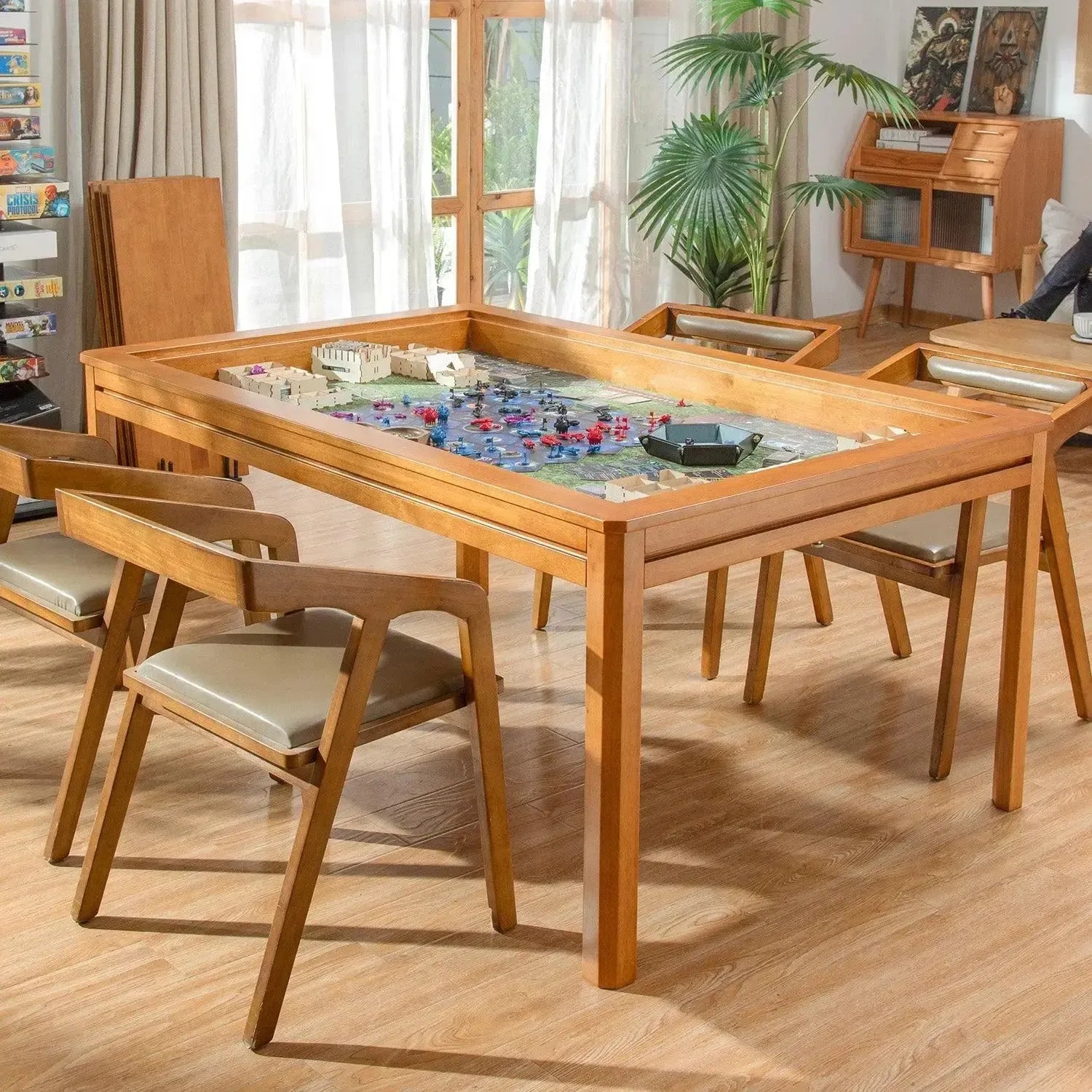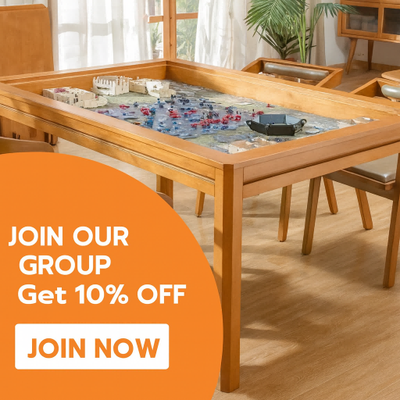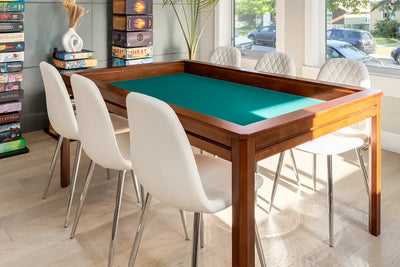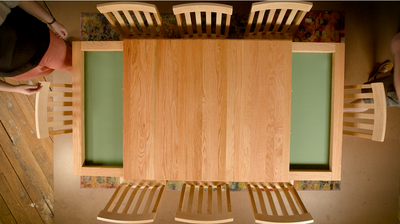10 Ultimate Guides for Board Game Table Care & Maintenance
A dedicated game table deserves the same care you give your favorite games. The ten maintenance practices below are adapted from your original Chinese checklist and expanded with practical, table-specific details. Follow them to keep wood, rails, toppers, and playmats looking new without overcomplicating your routine.
Contents
1) Regular Cleaning: Stop Dust & Stains Before They Set
After each session, clear crumbs and tokens, then wipe the surface with a slightly damp microfiber cloth (water + a drop of neutral soap). Immediately follow with a dry cloth so moisture doesn’t travel into seams or the grain—especially on solid-wood tops and dining leaves.
- Clean with the wood grain; avoid paper towels that shed fibers.
- Skip harsh chemicals (bleach, ammonia, citrus, abrasives) that haze finishes or soften adhesives.
- For glass insets, use a dedicated glass cleaner and a lint-free cloth; keep spray off wood rails.
2) Prevent Scratches: Use Mats, Pads & Gentle Surfaces
Scratches usually come from metal dice, sliding boxes, and rough mug bottoms. Protect the finish by playing on a neoprene/felt playmat or a thin topper, and add felt dots to trays, dice towers, and GM screens. Coasters should be standard issue at every seat.
- Choose mats with stitched edges to resist fraying; wash per label and air-dry flat.
- Stick soft feet under organizers and component bowls to eliminate micro-scratches.
- Keep sand or grit off the playfield—wipe after outdoor box hauling.

3) Avoid Direct Sunlight & UV
UV light fades pigments and dries finishes; localized heating can open seams or curl mats. Place the table away from hard sunbeams, or add sheer solar shades / UV window film. If sun reaches one rail, rotate toppers and mats monthly to even exposure.
- Use the warm-touch test: if a rail feels warm after light hits it, shade that zone.
- Glossy finishes show fade first—keep them out of afternoon light corridors.
4) Wood Care: Conditioning Oil & Paste Wax
Solid wood tops look their best with periodic conditioning. Use a clear furniture oil to nourish the grain and a microcrystalline/carnauba paste wax to add a thin protective shell. Work in thin coats, always with the grain, and buff patiently.
- Frequency: light use every 6 months; heavy weekly play every 3–4 months.
- Avoid tinted oils unless you intentionally want a color shift.
- Clean and fully dry before oiling; let wax cure before replacing mats or toppers.
5) Avoid Excessive Loads: Distribute Pressure Evenly
Game tables are built for people and play—not long-term heavy storage. Don’t stack book crates, terrain bins, or electronics in one corner. Keep dining toppers stored flat and avoid placing heavy monitors on removable leaves.
- Use a rolling side cart for minis and books during campaigns.
- Spread center mass during large setups; move boxed expansions to side surfaces.
- Follow manufacturer load limits for any slide-out leaves or vault lids.
6) Check Legs & Connectors on a Schedule
Wobble is usually solved with a wrench, not a repair bill. Every few months, tighten leg bolts, stretchers, and accessory mounts; level the feet so the playfield is flat edge-to-edge. A drop of silicone on sliding pins or rail sliders cuts squeaks and wear.
- Quarterly: bolt check, level check, slider lubrication.
- Anchor tall tables to the wall where recommended; avoid racking from uneven floors.
7) Prevent Water Marks: Handle Spills Immediately
Liquids are the #1 enemy of wood and felt. If a spill happens, blot—don’t push—with absorbent towels to keep liquid out of seams and the grain. Separate dining leaves, lift playmats, and circulate air with a small fan until fully dry.
- Fresh white rings can sometimes be lifted with a tiny dab of non-gel toothpaste; then re-wax the spot.
- Prevent rings entirely with rubber/cork coasters and covered tumblers.


8) Keep Pets at a Distance
Claws, fur, and curious paws are hard on rails and mats. During idle periods, use a breathable fitted cover or a low decorative screen around the table. Provide an alternate “hangout” (bed/scratch post) away from the play zone so pets don’t claim the table.
- Lift playmats after play; don’t leave grippy surfaces exposed.
- Vacuum around the base regularly so grit doesn’t transfer to the top.

9) Correct Storage & Environment
The storage environment matters as much as cleaning. Keep the table in a stable, ventilated room—ideally 65–75 °F (18–24 °C) with 45–55% RH. Avoid attics and basements with big swings, and never wrap the table in plastic (it traps moisture).
- Leave 1–2″ (2.5–5 cm) airflow between the table edge and walls; avoid HVAC blasts.
- Roll playmats loosely in tubes (print side outward); store dining toppers flat with soft spacers.
- Use a cotton/linen cover to block dust while letting moisture escape.

10) Routine Deep Care & Annual Service
Beyond daily wipes, schedule deeper care to extend the table’s lifespan. Once a year, inspect for lifted veneer, finish checks, and joint looseness; refresh felt dots under accessories; and re-oil / re-wax wood tops according to the finish. Call a furniture technician for deep scratches or loose joinery before problems grow.
- Quarterly: hardware tighten, level check, slider lubrication.
- Every 3–6 months: oil and/or paste wax depending on finish and usage.
- Annually: full inspection and corrective work as needed.






